Bombardier

Brief Synopsis
Cast & Crew
Richard Wallace
Pat O'brien
Randolph Scott
Anne Shirley
Eddie Albert
Walter Reed
Film Details
Technical Specs

Synopsis
Prior to the United States' entry into World War II, Major Chick Davis and Captain Buck Oliver of the United States Army Air Force argue about the most efficient bombing method. Buck, a pilot, advocates that pilots should dive bomb their own targets, while Chick argues for the high altitude precision bombing of the bombardier. In a contest between the two methods, the bombardiers win the challenge, and Chick is assigned to establish a school for bombardier training at Hughes Field in New Mexico. The field is run by Burton "Burt" Hughes, an attractive woman whose father was a respected general and with whom Buck is in love. Chick at first disapproves of Burt's presence at his school, but soon begins to rely on her efficiency.
Although still convinced that bombardiers are inferior to pilots, Buck arrives at the base to fly the new trainees. Among the new cadets are Burt's brother Tom, Joe Connors, girl-crazed Ignacius "Chito" Rafferty, Paul Harris and Jim Carter, who develops a crush on Burt. While flying a mission one day, Buck disputes a bombardier's authority to decide a pilot's heading, prompting Chick to vow that when his trainees graduate, they will receive commissions that grant them equal rank with pilots. After passing their ground training, the cadets begin aerial training.
While on a test flight, the controls on Buck's plane freeze, and Buck orders the cadets to parachute to safety. When Tom panics and refuses to jump, Carter knocks him unconscious and informs Buck that everyone has bailed out. After Buck jumps from the plane, Carter takes charge of the cockpit and saves Tom's life by unjamming the controls and landing the plane on its belly. Out of gratitude for saving her brother's life, Burt agrees to go out with Carter and they begin dating. Tom is considered for elimination from training because of his refusal to parachute, but Chick agrees to give him another chance. While piloting another flight, Buck's oxygen equipment fails and he passes out. When the plane suddenly plunges out of control, Tom falls out of the plane's escape hatch to his death.
Although a board of inquiry finds Buck innocent of negligence, he requests a transfer and leaves without saying goodbye to Burt, who has taken a leave of absence. After the bombing of Pearl Harbor, the bombardiers win their commissions and are called into active service. Now a colonel, Chick asks Burt to marry him, but she refuses, telling him that he is too much like her father. At the airfield, as the bombardiers board their planes, Burt embraces Carter and asks Sergeant Dixon, Chick's assistant, to give Buck a letter telling him that he is forgiven. After crossing the Pacific and landing at an island base, Chick and Buck meet again. Chick tells Buck that his mission is to fly low over a Japanese base near Nagoya and light up the camp for a surprise bombing attack.
That night, Buck and Dixon take off, but are shot down by the Japanese before completing their mission. After they are taken prisoner, Dixon remembers Burt's letter and is about to hand it to Buck when a Japanese soldier intercepts it. The Japanese then begin to torture the Americans to force them to divulge the location of their base. Just as a Japanese soldier begins to taunt them that their mission has been a failure, the hum of American bombers is heard overhead and the camp goes dark. In the ensuing chaos, Dixon is shot, but Buck escapes and drives a flaming truck through the camp, setting the base on fire and lighting it up for the bombardiers. In the air, the bombardiers drop their missiles on the target, knowing that a hit will mean Buck's death. As his comrades' bombs explode around him, Buck finds Burt's letter and dies a happy man.

Director
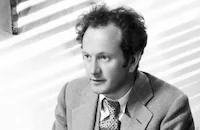
Richard Wallace
Cast
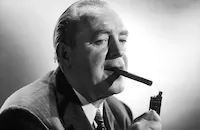
Pat O'brien

Randolph Scott

Anne Shirley

Eddie Albert

Walter Reed
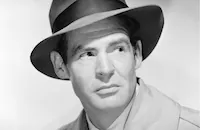
Robert Ryan
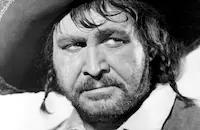
Barton Maclane
Leonard Strong

Richard Martin

Russell Wade
James Newill

John Miljan
Charles Russell
Brigadier General Eugene L. Eubank
Bruce Edwards
Harold Landon
Margie Stewart
Joe King
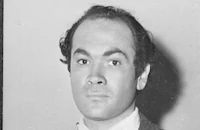
Abner Biberman
Russell Hoyt
Wayne Mccoy
Bud Geary
Warren Mace
Mike Lally
George Ford
Charles Flynn
Erford Gage
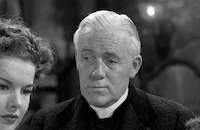
Charles D. Brown

Neil Hamilton

Lloyd Ingraham
Herbert Heyes
Robert Middlemass
Lee Shumway
Ed Peil
Paul Parry
James Craven
Cy Ring
John Calvert

Paul Fix
Murray Alper
Joey Ray
Dick Winslow
Kirby Grant
Eddie Dew
John James
Stanley Andrews
John Sheehan
Walter Fenner
Bert Moorhouse
Hugh Beaumont
Allen Wood
Larry Wheat

Joan Barclay
Marty Faust
Crew
C. Bakaleinikoff
Joseph Biroc
Claude Carpenter
Doran Cox
Albert S. D'agostino
Lt. Sol E. Ernst
Robert Fellows
Bailey Fesler
Al Herman
Lambert Hillyer
M. K. Jerome
Edward Killy
Nicholas Musuraca
Martin Rackin
Renié
Jack Scholl
Darrell Silvera
James G. Stewart
Douglas Travers
John Twist
John Twist
Vernon L. Walker
Roy Webb
Robert Wise

Videos
Movie Clip




Trailer
Film Details
Technical Specs

Award Nominations
Best Special Effects
Articles
Bombardier
Bombardier was begun before the U.S. entered the war and underwent several revisions over the next few years, including a specific reference to Pearl Harbor, to accommodate the swiftly changing events of the world conflict. It was finally released three years after production began. Authentic footage of bombardier training was shot on location at Kirkland Field in Albuquerque, New Mexico. Director Richard Wallace and crew spent six weeks at the facility capturing the daily training routine, and many of the real-life cadets appeared as extras. Air corps pilots and crews recently returned from combat in the Pacific flew the B-17 formation scenes used in the latter portions of the film.
Although the leads were established stars Pat O'Brien and Randolph Scott, the movie is probably most significant in the career of young Robert Ryan as a cadet initially reluctant to train in the use of the new bombsight. Getting his first real break in pictures, the sixth-billed Ryan impressed co-star O'Brien, partly because of the younger actor's professionalism and honest, straightforward way of dealing with people and partly because of their shared Irish heritage. Later that year, O'Brien, a major star at RKO, lobbied heavily for Ryan to play an important supporting part in his next picture, The Iron Major (1943). Ryan ended up making six pictures that year, and in the last, Tender Comrade (1943), he advanced to second billing behind RKO's leading female star, Ginger Rogers. After two more films in 1944, he went into the service; he returned to motion pictures in 1947 and quickly reestablished himself as an important screen presence.
Bombardier was edited by Robert Wise, and the second assistant director was Robert Aldrich. Both went on to major directorial careers. Wise won Academy Awards for West Side Story (1961) and The Sound of Music (1965); among Aldrich's films were What Ever Happened to Baby Jane? (1962), The Dirty Dozen (1967) and the original The Longest Yard (1974).
Director: Richard Wallace
Producer: Robert Fellows
Screenplay: John Twist
Cinematography: Nicholas Musuraca
Editing: Robert Wise
Original Music: Roy Webb; songs by M.K. Jerome & Jack Scholl
Art Direction: Al Herman, Albert D'Agostino
Cast: Pat O'Brien (Maj. Chick Davis), Randolph Scott (Capt. Buck Oliver), Anne Shirley (Burton Hughes), Eddie Albert (Tom Hughes), Robert Ryan (Joe Connors).
BW-100m.
by Rob Nixon

Bombardier
Eddie Albert (1906-2005)
The son of a real estate agent, Albert was born Edward Albert Heimberger in Rock Island, Ill., on April 22, 1906. His family relocated to Minneapolis when he was still an infant. Long entralled by theatre, he studied drama at the University of Minnesota. After years of developing his acting chops in touring companies, summer stock and a stint with a Mexican circus, he signed a contract with Warner Bros. and made his film debut in Brother Rat (1938). Although hardly a stellar early film career, he made some pleasant B-pictures, playing slap happy youths in Brother Rat and a Baby (1940), and The Wagons Roll at Night (1941).
His career was interrupted for military service for World War II, and after his stint (1942-45), he came back and developed a stronger, more mature screen image: Smash-Up: The Story of a Woman (1947); Carrie (1952); his Oscar® nominated turn as the Bohemian photographer friend of Gregory Peck in Roman Holiday (1953); a charming Ali Hakim in Oklahoma (1955); and to many critics, his finest hour as an actor, when he was cast unnervingly against type as a cowardly military officer whose lack of commitment to his troops results in their deaths in Attack! (1956).
As he settled into middle-age, Albert discovered belated fame when he made the move to Hooterville. For six seasons (1965-71), television viewers loved Eddie Albert as Oliver Wendal Douglas, the bemused city slicker who, along with his charming wife Lisa (Eva Gabor), takes a chance on buying a farm in the country and dealing with all the strange characters that come along their way. Of course, I'm talking about Green Acres. If he did nothing else, Alberts proved he could be a stalwart straight man in the most inane situations, and pull it off with grace.
After the run of Green Acres, Albert found two of his best roles in the late stages of his career that once again cast him against his genial, good-natured persona: the fiercly overprotective father of Cybill Shepherd in The Heartbreak Kid (1972), for which he earned his second Oscar® nomination; and the sadistic warden in Robert Aldrich's raucous gridiron comedy The Longest Yard (1974). Soon, Albert was in demand again, and he had another hit series, playing a retired police officer who partners with a retired con artist (Robert Wagner) to form a detective agency in Switch (1975-78).
The good roles slowed down slightly by the dawn of the '80s, both film: The Concorde: Airport '79 (1979), How to Beat the High Co$t of Living (1980), Take This Job and Shove It (1981); and television: Highway to Heaven, Murder, She Wrote, Thirtysomething, offered him little in the way of expansion. Yet, Albert spent his golden years in a most admirable fashion, he became something of activist for world health and pollution issues throughout the latter stages of his life. It is widely acknowledged that International Earth Day (April 22) is honored on his birthday for his tireless work on environemental matters. Albert was married to famed hispanic actress Margo (1945-85) until her death, and is survived by his son, actor Edward Albert, a daughter, and two granddaughters.
by Michael T. Toole
Eddie Albert (1906-2005)
Quotes
You're quite an entomologist.- Burton Hughes
Nope! But I know all about bugs.- Sgt. Archie Dixon
Trivia
Notes
The film opens with the following written introduction: "Through the courtesy of the War Department, RKO Radio Pictures proudly presents Brigadier General Eugene L. Eubank, United States Army Air Forces, American Bomber Commander in charge of the famous 19th Bombardment Squadron during the Philippine and Java campaigns." Eubank [whose name is not included within the onscreen cast credits] then speaks directly to the audience about a new kind of soldier known as the bombardier. At the end of his speech, a plane is shown dropping a bomb and the letters "Bombardier" appear on the screen. The production credits do not appear until the end of the film. They are preceded by the following acknowledgment: "RKO Radio Pictures gratefully acknowledges the cooperation of the United States Army Air Force, the Bomber Command, and the staff and officers of the Bombardier Training Organization at the Advanced Flying School, Kirtland Field, Albuquerque, New Mexico, in the making of this picture."
News items in Hollywood Reporter offer the following information regarding the film's production: In late 1941, Reeves Espy was slated to produce and Lt. Commander Frank Wead to script the film. In January 1942, the War Department granted RKO permission to film at Kirtland Field, the army Bombardier Training School in Albuquerque, NM. After the U.S. entered the war, however, the War Department rescinded its permission to film at the school because of a recently enacted prohibition on the filming of defense efforts. By March 1942, Espy quit over script differences and Wead left the studio to return to Naval service. In late April 1942, Richard Wallace was assigned to direct and Frank Ryan to script the film, and Lee Tracy and June Havoc were being considered to play the leads. The extent of Ryan's contribution to the released film has not been determined. By early fall 1942, the studio was re-granted permission to film at Kirtland Field. Location shooting began with Joseph Biroc acting as cameraman and Doran Cox directing the second unit which filmed the takeoffs and landing of bombers and military personnel. By late October 1942, Lambert Hillyer joined the team to direct the aerial action sequences. The filming was accelerated in order to adhere to a schedule dictated by the army. The Tokyo bombing sequence was shot in Midland, TX.
This film was former Warner Bros. producer Robert Fellow's first production for RKO. Hollywood Reporter announced in late April 1943 that the film's world premiere was to take place at Kirtland Field and was to be attended by the stars and RKO executives. The premiere was to be followed by a three-day tour of Southwestern cities. According to other news items in Hollywood Reporter, the picture was instrumental in boosting the careers of Robert Ryan, Walter Reed, Richard Martin and Russell Wade. This was Martin's first appearance as the character "Ignacius Chito Rafferty." In subsequent films, Martin played a cowboy by the name of "Chito Jose Gonzales Bustamente Rafferty." The film was nominated for an Academy Award for Best Special Effects.

Miscellaneous Notes
Released in United States 1943
Released in United States on Video June 27, 1990
Released in United States 1943
Released in United States on Video June 27, 1990














